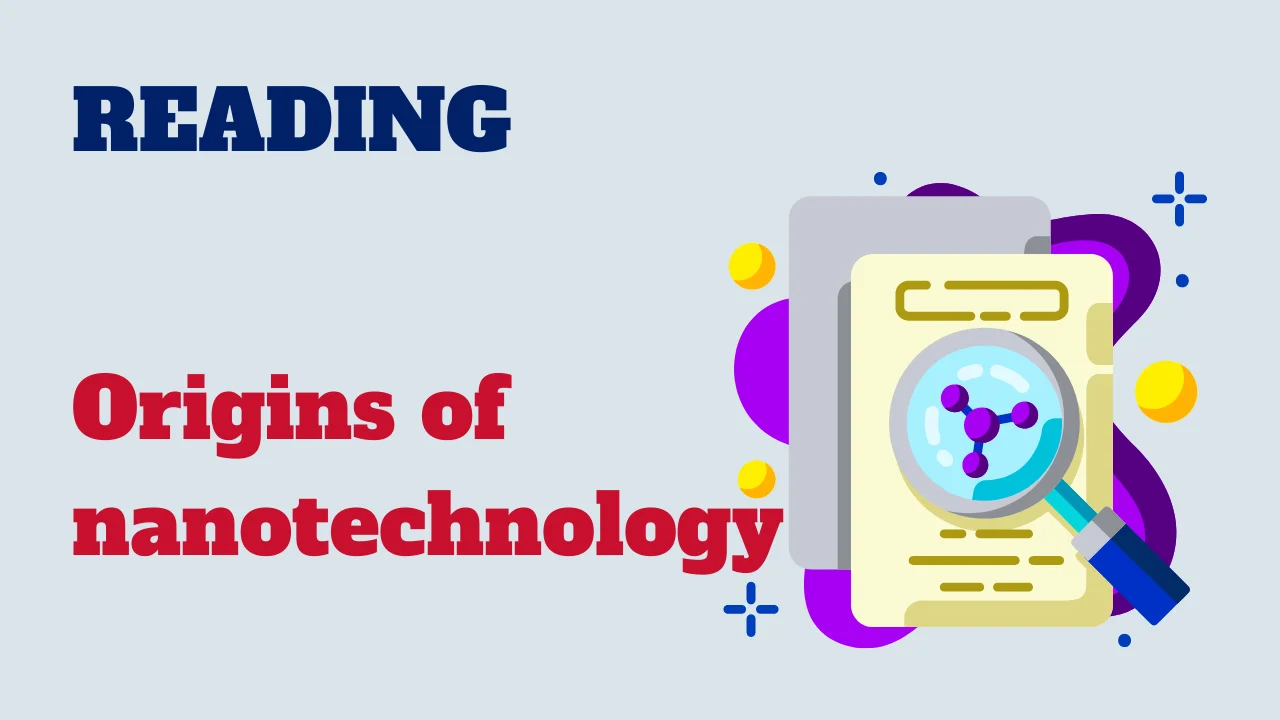Welcome to a discovery of the interesting history and development of nanotechnology! In this reading activity, we’ll delve into the origins of nanotechnology, its key milestones, and its implications for science, technology, and society.

From the conceptualization of nanoscale manipulation to the emergence of practical applications, nanotechnology has transformed our understanding of matter and opened up new frontiers in various fields.
Text: Origins of nanotechnology
The origins of nanotechnology, a field dedicated to manipulating matter at the atomic and molecular scale, can be traced back to a seminal lecture by physicist Richard Feynman. In his 1959 talk, “There’s Plenty of Room at the Bottom,” Feynman speculated about the possibility of directly manipulating atoms and molecules to create new materials and devices. His visionary ideas laid the conceptual groundwork for the field, even though the term “nanotechnology” had not yet been coined.
The term “nanotechnology” was introduced by Japanese scientist Norio Taniguchi in 1974 to describe precision machining at the nanometer scale. However, the field truly began to take shape in the 1980s with the development of key tools and techniques. The invention of the scanning tunneling microscope (STM) by Gerd Binnig and Heinrich Rohrer in 1981, which allowed scientists to visualize and manipulate individual atoms, was a significant milestone. Their work earned them the Nobel Prize in Physics in 1986 and demonstrated the feasibility of Feynman’s ideas.
Another pivotal moment came with the discovery of fullerenes (carbon molecules in the shape of a hollow sphere, ellipsoid, or tube) in 1985 by Harold Kroto, Richard Smalley, and Robert Curl. This discovery opened up new possibilities for creating novel materials with unique properties at the nanoscale. The subsequent discovery of carbon nanotubes and graphene further expanded the potential applications of nanotechnology.
The 1990s and 2000s saw rapid advancements in the field, driven by interdisciplinary collaboration among physicists, chemists, biologists, and engineers. The development of molecular nanotechnology by researchers such as K. Eric Drexler, who popularized the concept in his book “Engines of Creation,” highlighted the potential for building complex molecular machines and systems atom by atom.
Today, nanotechnology is a thriving field with applications across various industries, including medicine, electronics, energy, and materials science. It continues to evolve, driven by ongoing research and innovation, fulfilling Feynman’s early vision of manipulating matter at the smallest scales to create revolutionary technologies.
Comprehension questions
Congratulations on completing the study of nanotechnology’s history and development! Through this activity, we’ve uncovered the origins of nanotechnology, its key milestones, and its implications for science and society. Nanotechnology continues to revolutionize various fields, from materials science to medicine, and its future holds promising possibilities for innovation and discovery.



